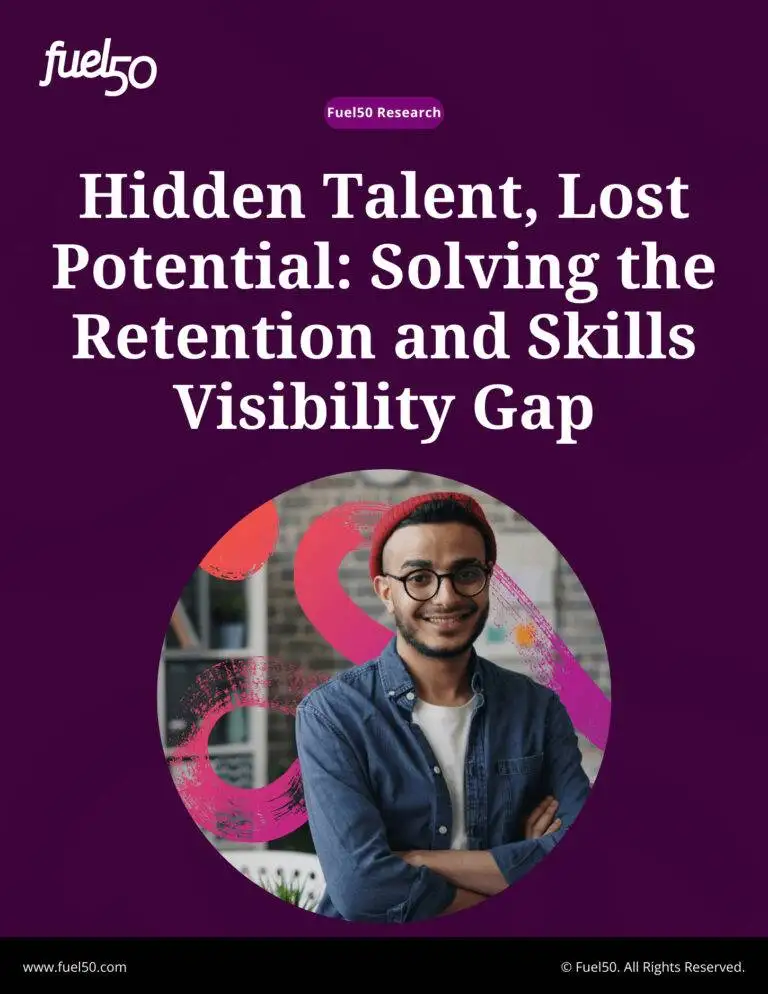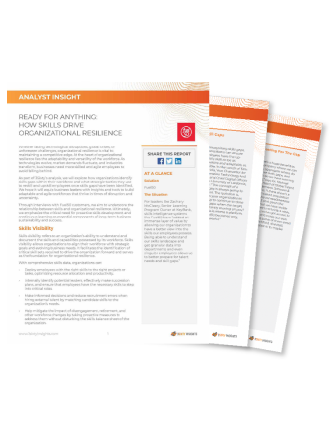Although layoffs and job losses come to mind for many people when they hear ‘restructuring,’ it’s time to reconsider how we think about workforce restructuring. This week on the Talent Experience Podcast, we were joined by Jennifer Dole, Director and Principal Analyst at 3Sixty Insights, to discuss the many forms of workforce restructuring, the future of work, succession planning, and so much more. Listen to this valuable episode with Jennifer Dole and host Rhonda Taylor!
Tune in below, at tlntx.co/jenn, or wherever you like to podcast!
Here’s how the conversation went… This interview has been edited and condensed.
Rhonda Taylor: Hello, I’m Rhonda Taylor, and I’m with the Talent Experience. This podcast addresses all issues in the talent space. And today I have a friend, a colleague from the past, and a trailblazer, Jennifer Dole. Jennifer, welcome to the show!
Jennifer Dole: Thank you, Rhonda, I’m excited to be here today.
Rhonda Taylor: Oh, Jen, we’re excited to have you because you have got such a wealth of knowledge. You’ve sat in the HR professional seat, I don’t know for how long but a significant length of time, you saw what it was like to have technology presented to the HR department, you saw what it was like to get the buy in from your fellow colleagues to buy technology. And now you’re sitting on the other side as an analyst. And you’re doing some tremendous work. So that’s why you’re here today, Jen.
Jennifer Dole: Thank you. And it really is a story of career resilience, right? Being able to pivot and use the same skills over and over again.
Rhonda Taylor: Yes, yes. And Jen, did I miss anything? In my introduction?
Jennifer Dole: I think the only thing that I want to add to that is, you know, I look at my work right now as I get to tell stories of HR leaders that are having impact. And that’s what really kind of, you know, makes me jump out of bed in the morning is to be able to hear those stories and tell those stories.
Rhonda Taylor: Yeah, and that keeps you motivated I bet.
Jennifer Dole: It sure does. I mean, HR people are some of the smartest people I know. And it’s a great experience to be able to tell their story.
Rhonda Taylor: And today, we’re diving into a recent paper that you did with Dr. Steven Hunt. I think the paper is titled The Next Era of Organization Restructuring: What We Can Do and Should Do Differently. So, we quickly got a briefing on it. And we talked about it, and I looked the paper up. And I want to ask a couple of questions. And first of all, I just want to get something clarified because I live in the world of change management, and then I read the paper about organizational restructuring. Can you share with the audience what the difference is between the two?
Jennifer Dole: Yeah, I think it’s worthy of a definition. Right? So, within the paper, we define it as restructuring is any action that significantly changes the roles and reporting structure of employees within an organization. So, it’s a little bit different than workforce change, because it emphasizes changing roles.
Rhonda Taylor: Right, there’s a lot of employee dynamics going on in change management.
Jennifer Dole: For sure, and restructuring really takes on three forms, right? There’s the most common one that we’re hearing about today, which is economic, it’s to save workforce costs. It comes in the form of layoffs. And we’re hearing kind of loud layoffs right now, right, in the in the headlines. The second type of restructuring is really operational, where we see companies increasing their strategic alignment, typically that through merger and acquisitions. And then finally, is organic restructuring, which is really designed to support the employee career interests, and often takes the shape of internal mobility.
Rhonda Taylor: Right, right. I’d like to touch on the first type of restructuring the economic, and I think that’s because we’re hearing of all these tech companies laying off.
Jennifer Dole: It’s so visibly Rhonda, so visible and painful.
Rhonda Taylor: Help me understand what’s going on in this restructuring quote unquote, example Microsoft or even Amazon. Amazon laid off all these people, yet they had like 10,000 job recs and this is not counting the people in the warehouse. So where is this restructuring coming from? Or do we even know?
Jennifer Dole: Yeah, you know, I think we see the headlines right now in the tech industry. And I think just in the last couple months, there’s been 200,000 tech workers laid off, really, because of some over hiring activity. And it’s making the headlines, right? And its CEOs are sharing their internal letters to employees with the world, and employees are posting about it on LinkedIn, and TikTok videos, and it’s just really become highly visible. But, you know, restructuring really has some questionable benefits.
Rhonda Taylor: Yeah, we will see down the road.
Jennifer Dole: We sure will, because it’s not just going to be about the people that leave the workforce through layoffs, but certainly it’s about the workforce that survives those layoffs, and what they do, right? Can they recover? Or are they going to be turned over? And research shows that laying off 1% of your workforce, leads to 31% increases in involuntary turnover. So, this isn’t over, to your point.
Rhonda Taylor: Right. A level of insecurity. Jenn, restructuring is becoming more common, as we just spoke about questionable and visible, we just spoke about the questionable ones. What are your feelings about the ones that are not visible? And can you just give us an example of them?
Jennifer Dole: Yeah, so those visible and questionable and restructuring that’s happening is really around layoffs. But restructuring is broader than that, right? It’s, it also takes the form of operational regarding the mergers and acquisitions, or it can take the form of organic where employees are really choosing to change roles. And on a recent roundtable with 25 HR executives, we talked, Steve Hunt and I talked about this with them. And we wanted to know the current state, the current state that they talked to us about was restructuring is becoming more the way that they work. They’re constantly tightening their belt. They it’s part of the ebb and the flow of things. It is, you know, they’re restructuring and changing jobs all the time. And they’re building the capabilities of their workforce to go through that business transformation. So, these are the stories that aren’t making the headlines, Rhonda.
Rhonda Taylor: Jen, what are some of the common problems with restructuring? And does it need to be the way that they are? And we know, job insecurity is one of them. Well, what are other problems that come along with restructuring?
Jennifer Dole: Yeah, that’s a great question. And again, you know, focused on the restructuring that’s just part of life. The ebb and flow of business. But HR leaders not only want to make it more effective, but they want to be more empathetic in the process. They do want to be able to retain their people. They do want people to rally around where they’re going and what they’re doing. And so many of the leaders that we spoke to, the employee experience is top of mind for them. And we were able to expand that in that it’s not just the employee experience, but it’s the managers experience, and the team’s experience as well. And so, some of the problems that we see are it is a disruption to operations, right? And employee decides to take on a different position, or there’s a merger and acquisition with new people coming in. But how do you backfill jobs, how do you create new jobs this becomes a disruption. Also, if you’re not doing it well, there can be perceived unfairness, right people saying like hey, wait a minute, I didn’t know that that job was open or that that was possible. So, these are some of the problems that come up with organic restructuring or operational restructuring that we can and should solve for.
Rhonda Taylor: And that’s where technology often steps in.
Jennifer Dole: Very much so. And there’s lots of different technology that can help solve those problems. Certainly, talent marketplace, opportunity marketplace, but it expands beyond that, right? So, employee listening, and skills, and succession planning, and development, and, you know, even performance management and adjusting goals as the business is changing.
Rhonda Taylor: You know, business is changing, and we’re seeing the talent, the internal talent mobility market grow. How is that part of the restructuring process that’s going on in the employee workplace?
Jennifer Dole: Yeah, you know, that’s a great question, because one of the examples that came up in the conversation, we were having with the HR leaders was, they have a, one of the companies has a no layoff policy. And so, what that means in practice is that they look at the way they work, and the roles that they have. And then they know that they’ve got changing business conditions and changing strategy. And they’re moving people around based on their skills, to those new strategies. People are electing based on their interest to go work on those new strategies. So it’s, I mean, why are the headlines full of those stories Rhonda?
Rhonda Taylor: Oh yeah, and like Jen, when we were in the workplace, you know, upskilling was an LMS. You know, and now we’re learning that there are stronger ways, you know, mentoring, coaching, gigs, you know, just all kinds of different types of upskilling.
Jennifer Dole: I mean so often, and for so many years, we’ve talked about the 70 20 10 model, right? And that learning is only is, you know, what is it classroom learning online learning, it’s only 10%. Right? It’s that experiential learning that 70%. And that’s what the internal mobility really gets at.
Rhonda Taylor: That’s right. And, you know, we’re seeing that. So relevant in today’s employee world. But there’s another thing I wanted to speak about, and leadership was having to take a look at succession planning. Succession planning, days gone by was something that you thought about for C suite. That’s changed, right?
Jennifer Dole: It sure has. I mean I as a practitioner ran succession planning for Fortune 500’s, and we were focused on high potentials. And it was just a percentage, a small percentage of the organization. And now what we find is people wanting to go deeper into their organization for succession planning, they want to touch on all levels, because there’s so much hidden talent in an organization.
Rhonda Taylor: And some of the lower skills are very important to the operation of the organization. And I think a great example that I can think of, that really opened my eyes to this was a large company that was in the healthcare world. And during COVID they had warehouses. And if a forklift driver didn’t show up one day, or got COVID for two weeks, it disrupted the whole, all the processes in the warehouse. So, there was a succession plan, right down to the forklift drivers.
Jennifer Dole: Amazing. It’s so important, really, to give people lots of opportunities, and that everyone sees a future within the organization. That’s what really builds the confidence as you’re going through these restructuring changes that people at all levels can see that future.
Rhonda Taylor: Jenn, you know restructuring is such a, you know, it’s almost like a company has to admit we’re not doing something right. And some people can’t see the forest for the trees there. There’s always a core in the company that says, oh, we have to restructure. But then the rest of the management team doesn’t see the problem. How do you proceed in getting a buy-in for restructuring?
Jennifer Dole: Yeah. And you know, I think when people talk about restructuring, they just have this allergic reaction to it. Right? You have these images of people being laid off, and it’s traumatic, and you’re losing work relationships, and how are you going to get things done? Restructuring doesn’t have to just be that anymore, Rhonda, right? So, the mergers and acquisitions is a form of restructuring that can be positive when you bring two organizations together, and you combine their skills for the strategy. Restructuring can be organic, where people are moving from, you know, lower demand business strategies to higher demand business strategies. So maybe it’s just about like changing the image of restructuring and normalizing it a little bit more.
Rhonda Taylor: Yeah. Jenn, you know, we just touched the tip of the iceberg, like we really haven’t gotten into the meat of at all. Another day, I hope.
Jennifer Dole: I hope so too, I enjoyed this!
Rhonda Taylor: Jenn Dole from 3Sixty Insights, thank you for being our guest on the Talent Experience.
Jennifer Dole: Thank you Rhonda!
Rhonda Taylor: This is Rhonda Taylor saying goodbye, have yourself a great week!














